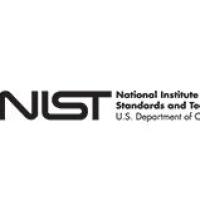Evolutionary rates vary among rRNA structural elements
互联网
S. Smit, J. Widmann and R. Knighundefined
Department of Chemistry and Biochemistry, University of Colorado, Boulder, CO 80309
Understanding patterns of rRNA evolution is critical for a number of fields, including structure prediction and phylogeny. The standard model of RNA evolution is that compensatory mutations in stems make up the bulk of the changes between homologous sequences, while unpaired regions are relatively homogeneous. We show that considerable heterogeneity exists in the relative rates of evolution of different secondary structure categories (stems, loops, bulges, etc.) within the rRNA, and that in eukaryotes, loops actually evolve much faster than stems. Both rates of evolution and abundance of different structural categories vary with distance from functionally important parts of the ribosome such as the tRNA path and the peptidyl transferase center. For example, fast-evolving residues are mainly found at the surface; stems are enriched at the subunit interface, and junctions near the peptidyl transferase center. However, different secondary structure categories evolve at different rates even when these effects are accounted for. The results demonstrate that relative rates and patterns of evolution are lineage specific, suggesting that phylogenetically and structurally specific models will improve evolutionary and structural predictions.
download link:
http://nar.oxfordjournals.org/cgi/reprint/35/10/3339?ck=nck
RNAmmer: consistent and rapid annotation of ribosomal RNA genes
Nucleic Acids Research, 2007, Vol. 35, No. 9 3100-3108
Karin Lagesen1,2~undefined, Peter Hallin3, Einar Andreas Rødland1,2,4,5, Hans-Henrik Stærfeldt3, Torbjørn Rognes1,2,4 and David W. Ussery1,2,3
The publication of a complete genome sequence is usually accompanied by annotations of its genes. In contrast to protein coding genes, genes for ribosomal RNA (rRNA) are often poorly or inconsistently annotated. This makes comparative studies based on rRNA genes difficult. We have therefore created computational predictors for the major rRNA species from all kingdoms of life and compiled them into a program called RNAmmer. The program uses hidden Markov models trained on data from the 5S ribosomal RNA database and the European ribosomal RNA database project. A pre-screening step makes the method fast with little loss of sensitivity, enabling the analysis of a complete bacterial genome in less than a minute. Results from running RNAmmer on a large set of genomes indicate that the location of rRNAs can be predicted with a very high level of accuracy. Novel, unannotated rRNAs are also predicted in many genomes. The software as well as the genome analysis results are available at the CBS web server.
http://nar.oxfordjournals.org/cgi/reprint/gkm160v1
Microarray analysis of newly synthesized RNA in cells and animals
M. Kenzelmanundefined†‡, S. Maertens†, M. Hergenhahn§¶, S. Kueffer†, A. Hotz-Wagenblatt , L. Lundefined~E_S._Wang†, C. Ittrich††,T. Lembergeundefined, R. Arribas‡‡, S. Jonnakuty , M. C. Hollstein§, W. Schmiundefined, N. Gretundefined~E_H._J._Gro¨ ne†, and G. Schu¨ tundefined
6164–6169 PNAS April 10, 2007 vol. 104 no. 15
Current methods to analyze gene expression measure steady-state levels of mRNA. To specifically analyze mRNA transcription, we have developed a technique that can be applied in vivo in intact cells and animals. Our method makes use of the cellular pyrimidine salvage pathway and is based on affinity-chromatographic isolation of thiolated mRNA. When combined with data on mRNA steady-state levels, this method is able to assess the relative contributions of mRNA synthesis and degradation/stabilization. It overcomes limitations associated with currently available methods such as mechanistic intervention that disrupts cellular physiology, or the inability to apply the techniques in vivo. Our method was first tested in serum response of cultured fibroblast cells and then
applied to the study of renal ischemia reperfusion injury, demonstrating its applicability for whole organs in vivo. Combined with data on mRNA steady-state levels, this method provided a detailed analysis of regulatory mechanisms of mRNA expression and the relative contributions of RNA synthesis and turnover within distinct pathways, and identification of genes expressed at low abundance at the transcriptional level.
http://www.pnas.org/cgi/reprint/104/15/6164
Specificity, duplex degradation and subcellular localization of antagomirs
Nucleic Acids Research, 2007, Vol. 35, No. 9 2885–2892
Jan Kru¨ tzfeldt1,y, Satoru Kuwajima1, Ravi Braich2, Kallanthottathil G. Rajeev2,
John Pena3, Thomas Tuschl3, Muthiah Manoharan2 and Markus Stoffel1,
MicroRNAs (miRNAs) are an abundant class of 20–23-nt long regulators of gene expression. The study of miRNA function in mice and potential therapeutic approaches largely depend on modified oligonucleotides. We recently demonstrated silencing miRNA function in mice using chemically modified and cholesterol-conjugated RNAs termed ‘antagomirs’. Here, we further characterize the properties and function of antagomirs in mice. We demonstrate that antagomirs harbor optimized phosphorothioate modifications, require 419-nt length for highest efficiency and can discriminate between single nucleotide mismatches of the targeted miRNA. Degradation of different chemically protected miRNA/antagomir duplexes in mouse livers and localization of antagomirs in a cytosolic compartment that is distinct from processing (P)-bodies indicates a degradation mechanism independent of the RNA interference (RNAi) pathway. Finally, we show that antagomirs, although incapable of silencing miRNAs in the central nervous system (CNS) when injected systemically, efficiently target miRNAs when injected locally into the mouse cortex. Our data further validate the effectiveness of antagomirs in vivo and should facilitate future studies to silence miRNAs for functional analysis and in clinically relevant settings.
http://www.pubmedcentral.nih.gov/articlerender.fcgi?artid=1888827







